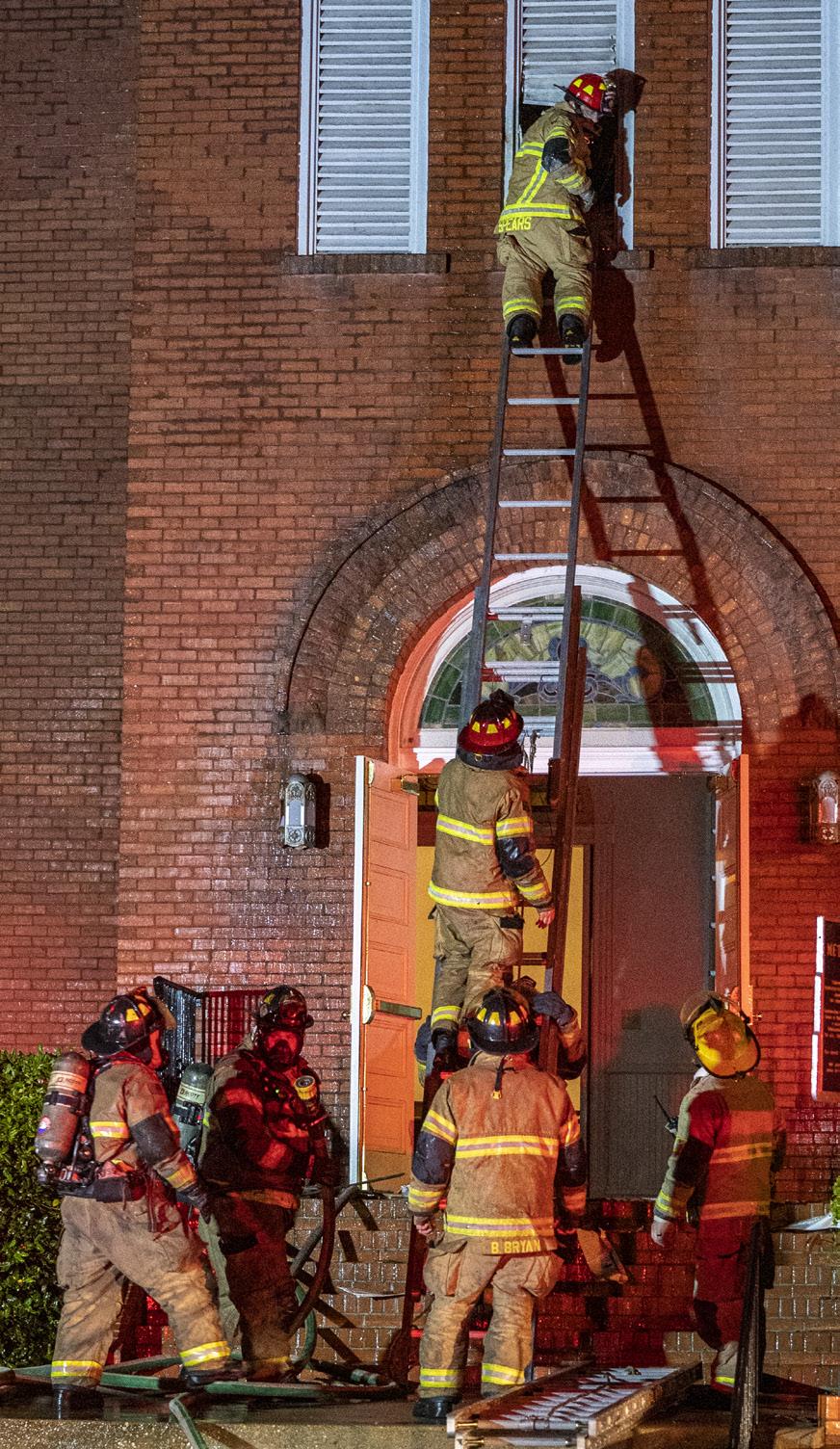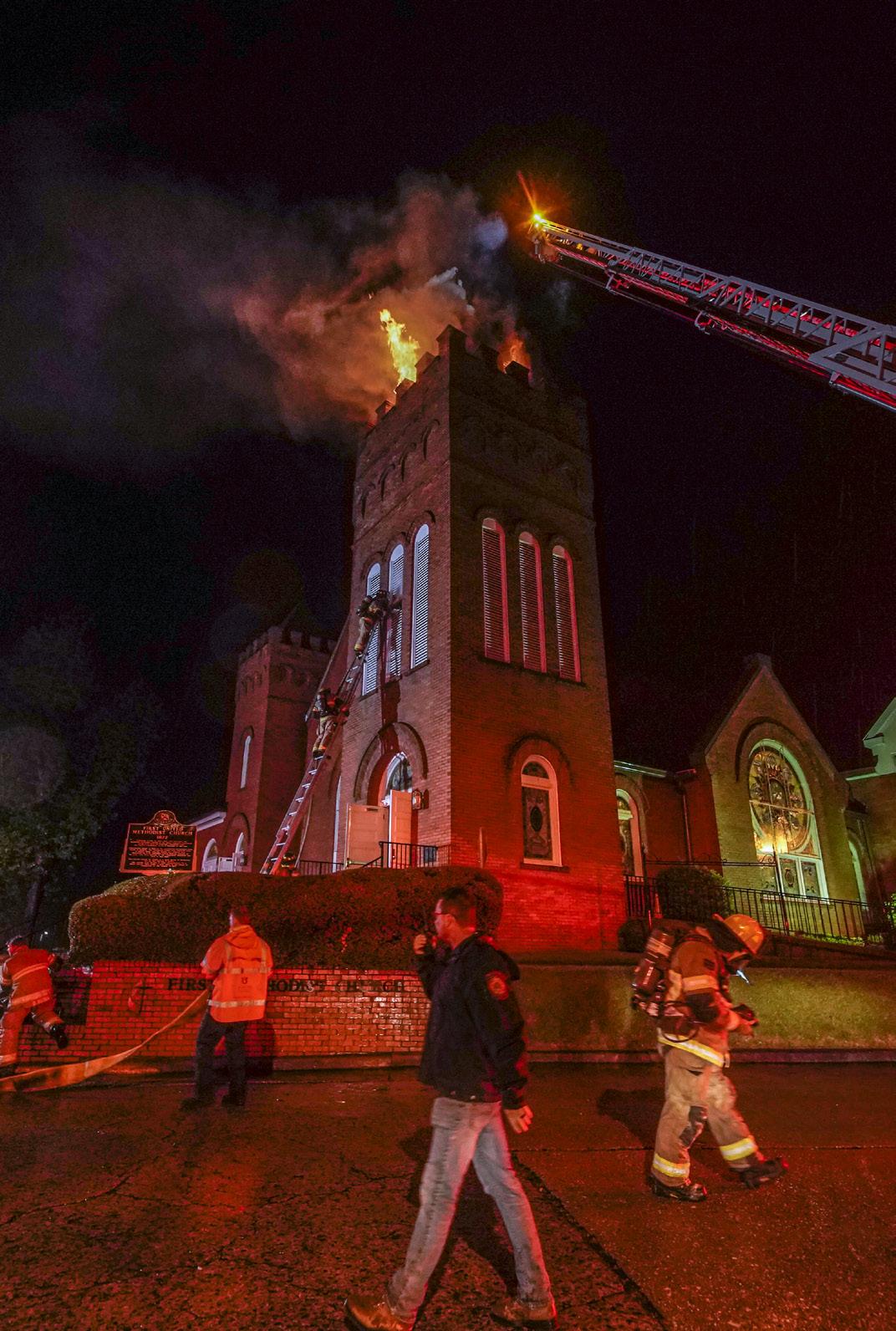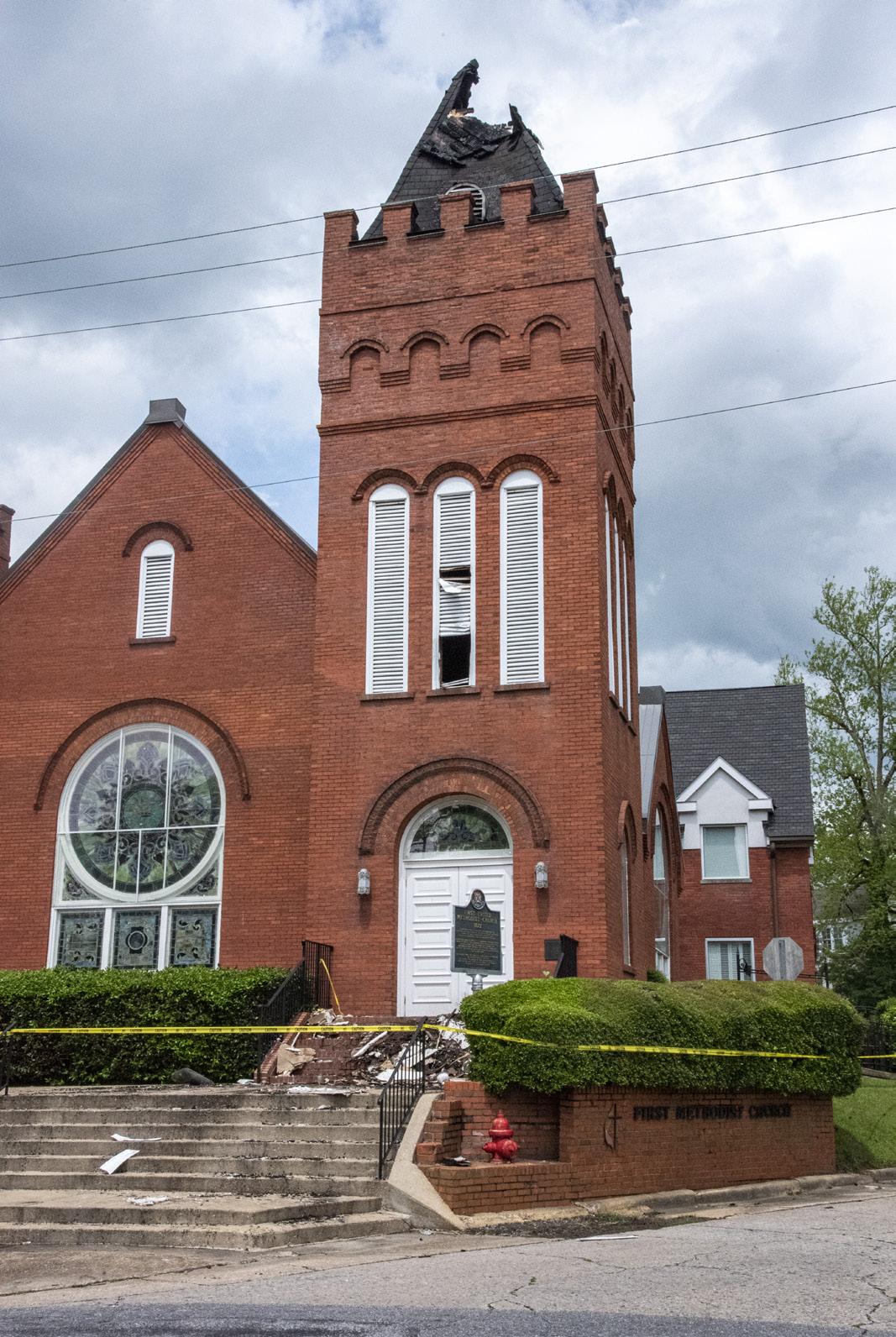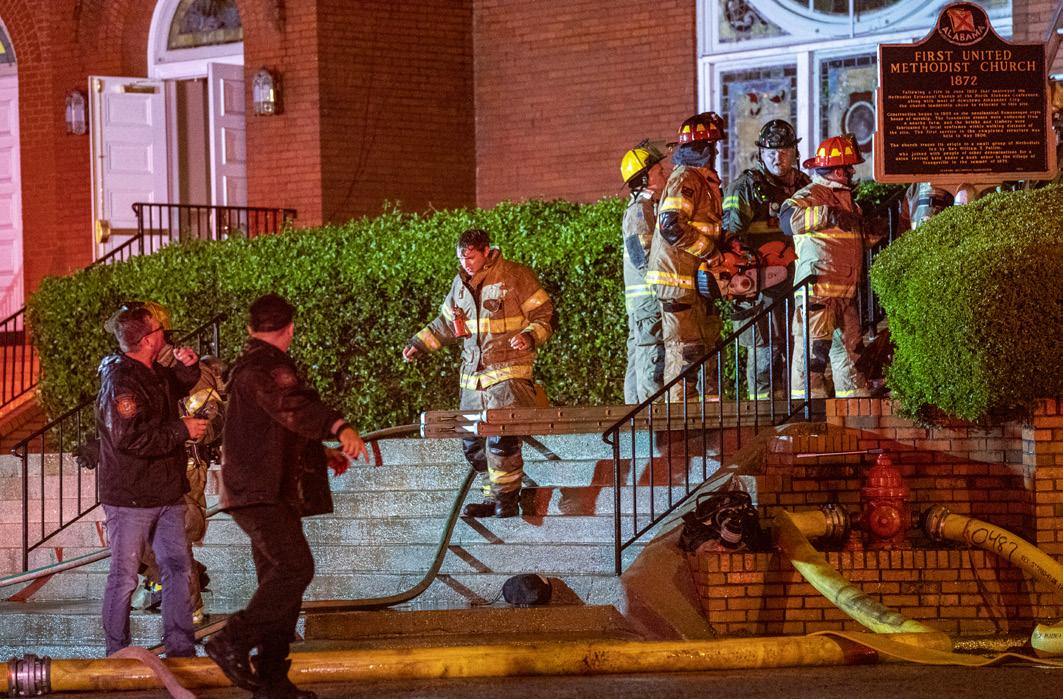
13 minute read
GARDEN TALK
Grow goodness this summer
Avoid disease and insect damage with these tips
Tomatoes are a summertime treat and a musthave in the vegetable garden. By early May, most people have already planted tomato plants or are just now getting started. A lot of work and care is required to get to the point where one can pick a nice lush ripe backyard tomato. Managing insects and diseases is a significant chore, but mulching, watering and staking may be just as critical, if not more important.
Placing mulch around new tomato plants helps control weeds and conserves moisture. It also reduces diseases by reducing the amount of water splashing onto the bottom leaves of the plants. Spread 2 to 3 inches of mulch in a circle around the plants once the soil has warmed up and the plants grow well. Pine straw, grass clippings, newspaper and wheat straw are good choices and decompose as the season progresses. Mulch can be tilled in later in the fall as additional organic matter. Mulch helps to ensure uniform soil moisture and cuts down on the need for frequent watering.
Speaking of water, tomatoes like consistent moisture, rather than fluctuations of too wet or too dry. With frequent rain showers always in the forecast, this can be difficult to control. Hand water or run irrigation long enough to wet the soil 6 inches deep. Adequate moisture will help maintain uniform production and will reduce blossom-end rot. Avoid overhead watering and contact with leaves as much as possible to limit
A Delicious Treat
Green tomatoes ripen if stored with apples.
Grow goodness this summer
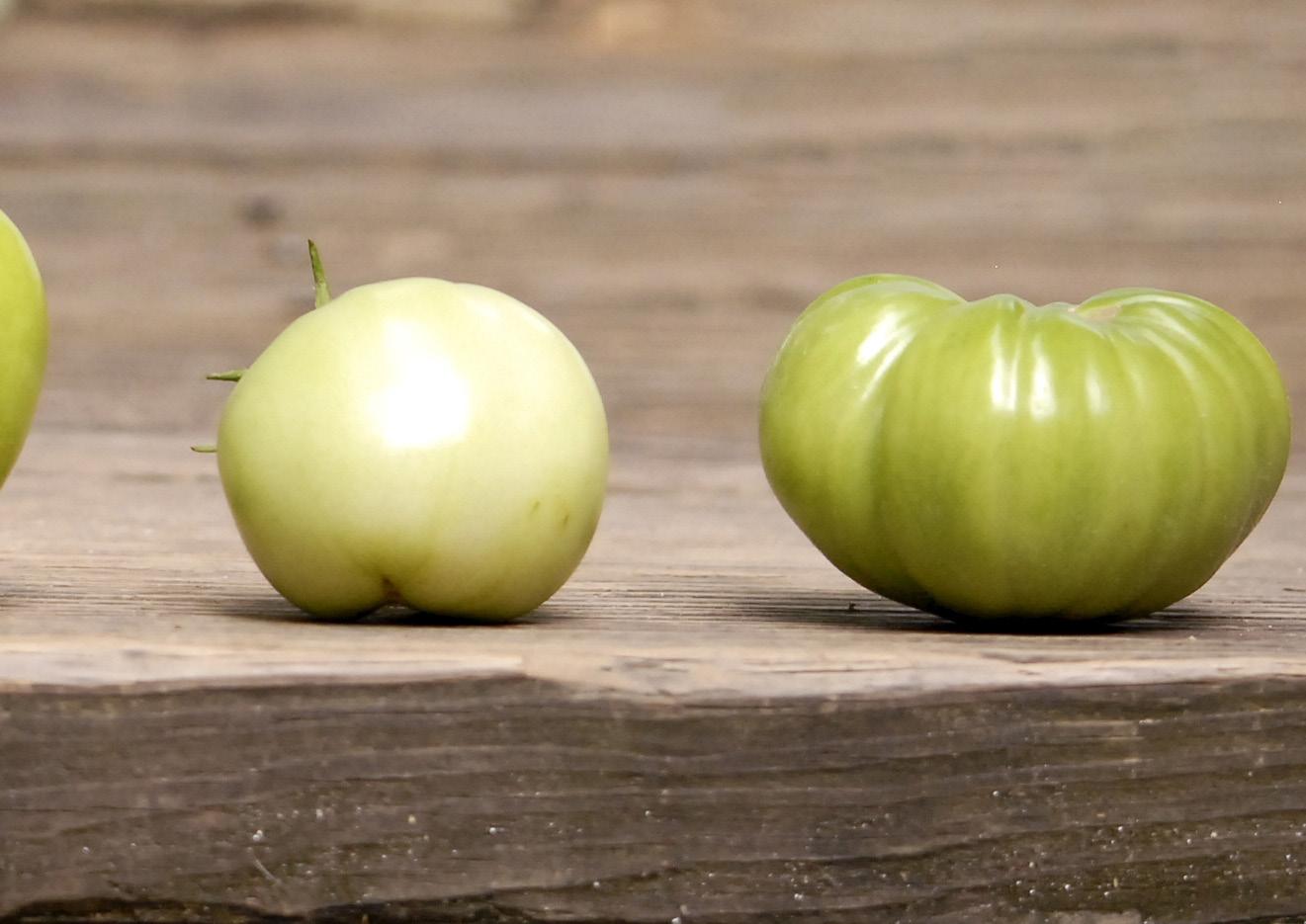
the development of diseases. Invest in drip irrigation or soaker hoses. Supporting tomato plants in some way as they grow and develop fruit is also necessary. Garden Talk produce ripe tomatoes earlier in the season than caged tomatoes. Indeterminate tomato plants, like ‘Better Boy,’ do better if surrounded by wire cages; There are many specific techniques for however, a cage should be sturdy and supporting tomato plants; however, the two well anchored to the ground. Concrete general methods are staking and caging. reinforcing wire provides good support for
Since determinate tomatoes, like the plants. A cage should be 24 inches in ‘Celebrity,’ do not grow as tall as others, diameter. A length of wire 9 to 10 feet can they are most often staked. With staking, be used to construct a cage within that size all flower clusters on a tomato plant range. In general, a caged tomato plant will usually develop on the same side of the produce more but smaller-sized fruit than a stem. A stake should be placed so that the staked tomato plant. developing fruits are not crowded between It is also vital to visit the vegetable garden the main stem and the stake. Therefore, do not stake plants until after the first flower Shane Harris daily to check how well it is growing and detect potential problems. Two common cluster is formed. Then, drive the stake on diseases that may occur early in the year are the side opposite of the flower cluster and the Tomato Spotted Wilt Virus and early about 4 inches away from the base of the plant. Tie the blight. Most tomato diseases, with only the exception of stem just above the first flower cluster, using strong a few, can be prevented or controlled. If not prevented binder twine or cloth strips. Staked tomatoes will usually or detected early, these diseases can be headaches for
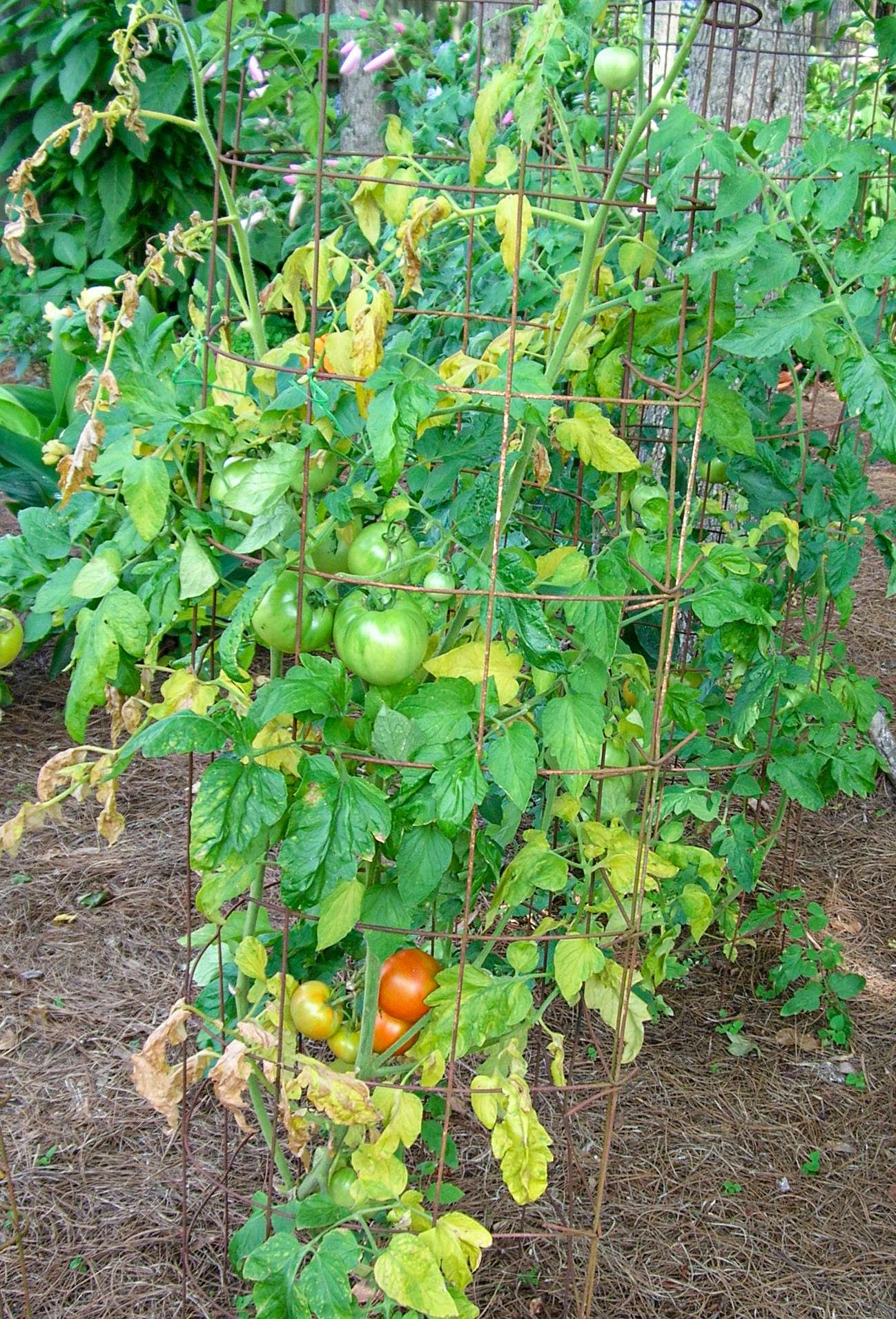

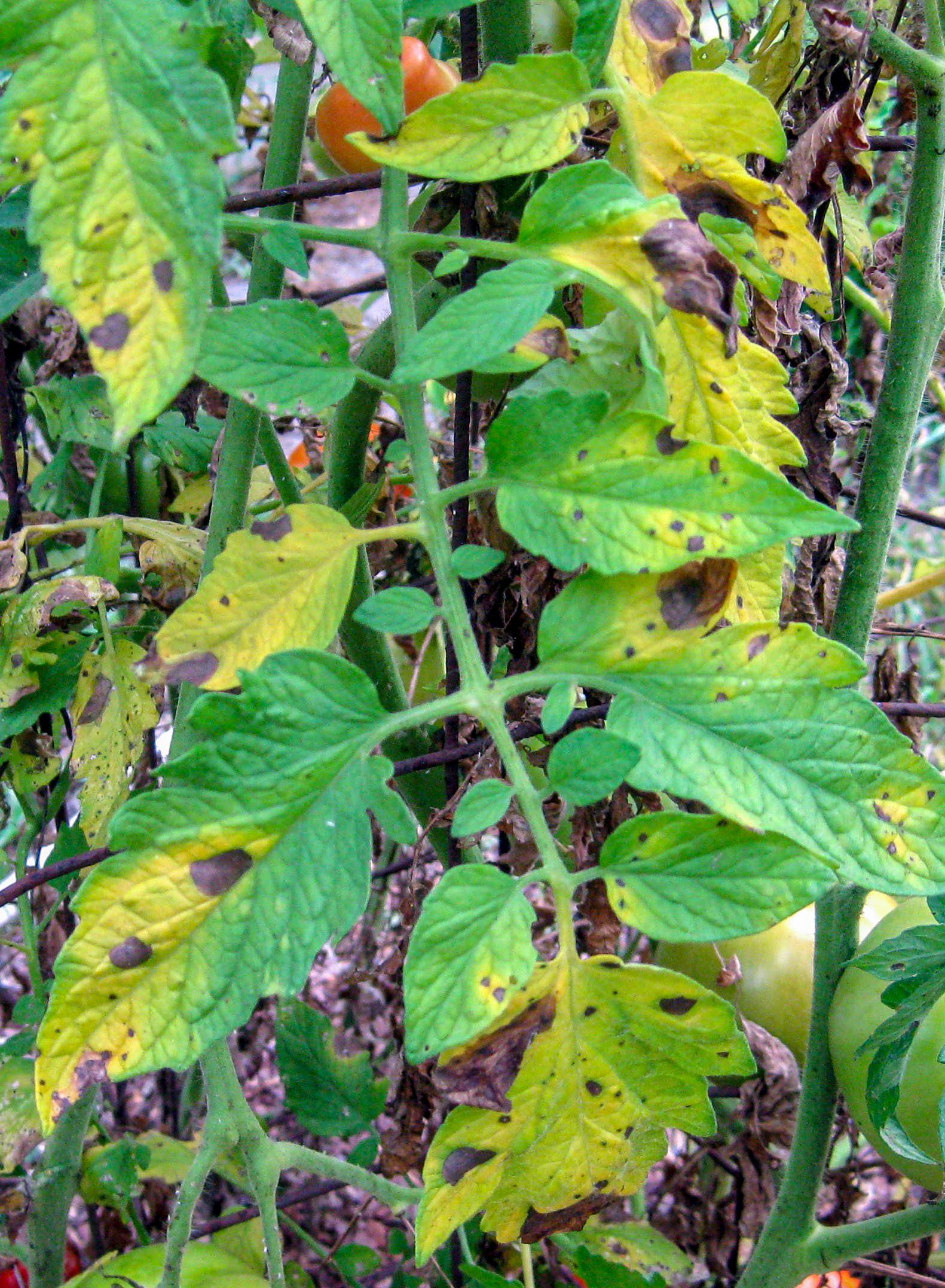
Support the Plants gardeners and farmers. Top Left: Early blight TSWV is a serious disease can be spotted found on tomatoes because by the yellowing of leaves on the tomato plant; Bottom: To prevent the spread of TSWV, plants should there is no cure. Once found, gardeners must yank up the infected plant and discard it. The first noticeable sign be sprayed is that the tomato plant with insecticide. stops growing and tends to be much shorter than the healthy plants around it. Plants infected with TSWV exhibit dark purplish-gray ring spots on the leaves in the terminal portion of the plant. Later, the dark spots merge and cause the leaves to appear bronze. Infected fruit may exhibit numerous ring spots and blotches and may become distorted if infected when immature.
TSWV spreads by insects called thrips. Controlling thrips to prevent and reduce the spread of TSWV is the only strategy. Spray tomatoes with an insecticide, such as malathion, neem or insecticidal soap, to suppress insect populations and the spread of TSWV. At the first sign of TSWV, always remove and destroy all infected plants as soon as symptoms appear. Leaving an infected plant serves as a new source for the disease and only aids in spreading the virus. Sacrificing one or a few may help save the others. New tomato cultivars are developing a resistance to TSWV.
Early blight is usually the first disease that attacks tomato plants each year. As its name states, this fungal disease appears early in the growing season as spots on the older lower leaves and causes them to yellow and die. It slowly spreads and moves up the plant onto the rest of the leaves. In addition to moving up the individual tomato plant, early blight also spreads to other existing tomato plants in the garden. A severe case of early blight will stunt plant growth and limit much of the fruit production.
The best way to deal with early blight is to prepare and control it early. One cultural method is to make sure mulch is placed around the plants throughout the garden. Since early blight is a fungal disease and spreads
through spores, mulch will help limit the amount of water and spores that splatters on the plant during rainfall and overhead irrigation.
As mentioned above, it is best to put the water around the base of the plants near the ground rather than sprinkling overhead. Excess water on the leaves combined with high humidity could help trigger fungal growth and early blight.
Fungicides containing chlorothalonil, commonly sold as Daconil, are recommended for the prevention and control of early blight and other vegetable fungal diseases. Once the young tomato plants are about a foot tall, consider starting a fungicide spray program. At the first noticeable sign of early blight, pick off the affected leaves and begin spraying. If early blight has been a problem in the past, more than likely, it will re-appear each season.
Lastly, scout regularly for insect infestations. Most garden bugs are not overly devastating to tomatoes, but do be on the lookout for aphids, stinkbugs and caterpillars. These can cause damage with long-term effects and require quick action before the problem and numbers get worse.
Homegrown tomatoes can be a real treat or a real headache. The treat is eating and enjoying that nice red and ripe tomato. The journey to getting to that point and actually harvesting one or two can be a challenge. Contact me or your local County Extension office for additional growing advice or help with any problems that might arise. A BLT sandwich would be really nice this summer; I just hope we all can again successfully grow them “T’s.”
~Shane Harris is the County Extension Coordinator for Tallapoosa County.
IT’S TIME FOR OUTDOOR FUN, IS YOUR HEART HEALTHY?
It’s time for outdoor fun, and you don’t want to miss a single moment in the sun.
Make sure your heart is healthy and ready for the season with an appointment at the UAB Heart & Vascular Clinic at Russell Medical.
Kevin Sublett, MD, is board-certified in cardiovascular care and offers the latest in prevention, testing, and treatment for keeping your heart healthy.
Our clinic is backed by the knowledge and expertise of UAB Medicine, including: • Advanced ultrasound testing • Nuclear medicine imaging in fully accredited labs • Management of cardiac rhythm disorders • Interventional cardiology care

HEART & VASCULAR CLINIC AT RUSSELL MEDICAL
Make an appointment today by calling (256) 234-2644. 3368 Highway 280, Suite 130 • Alexander City, AL 35010 uabmedicine.org/HeartRussell
Local fire crews come together to save FUMC
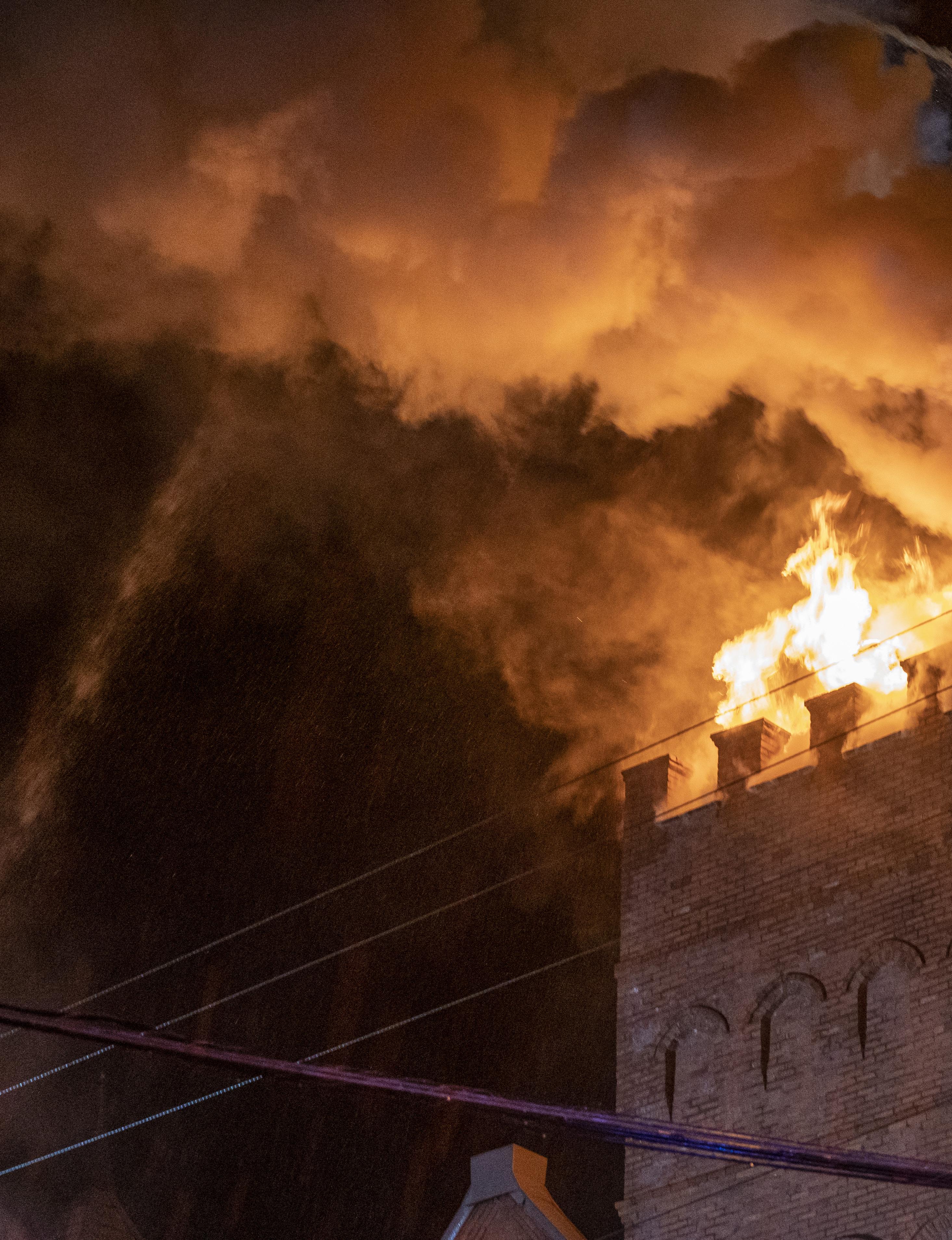
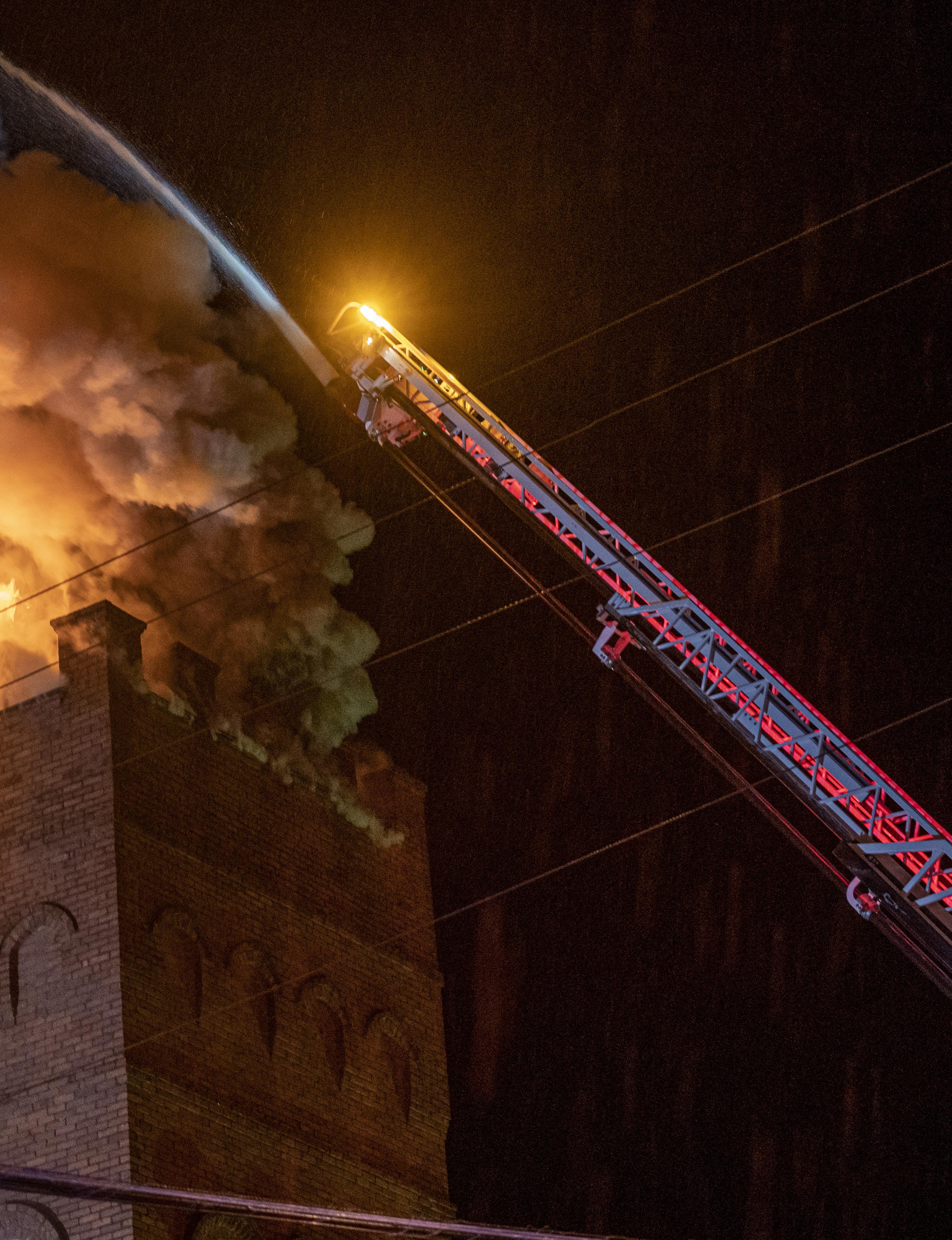
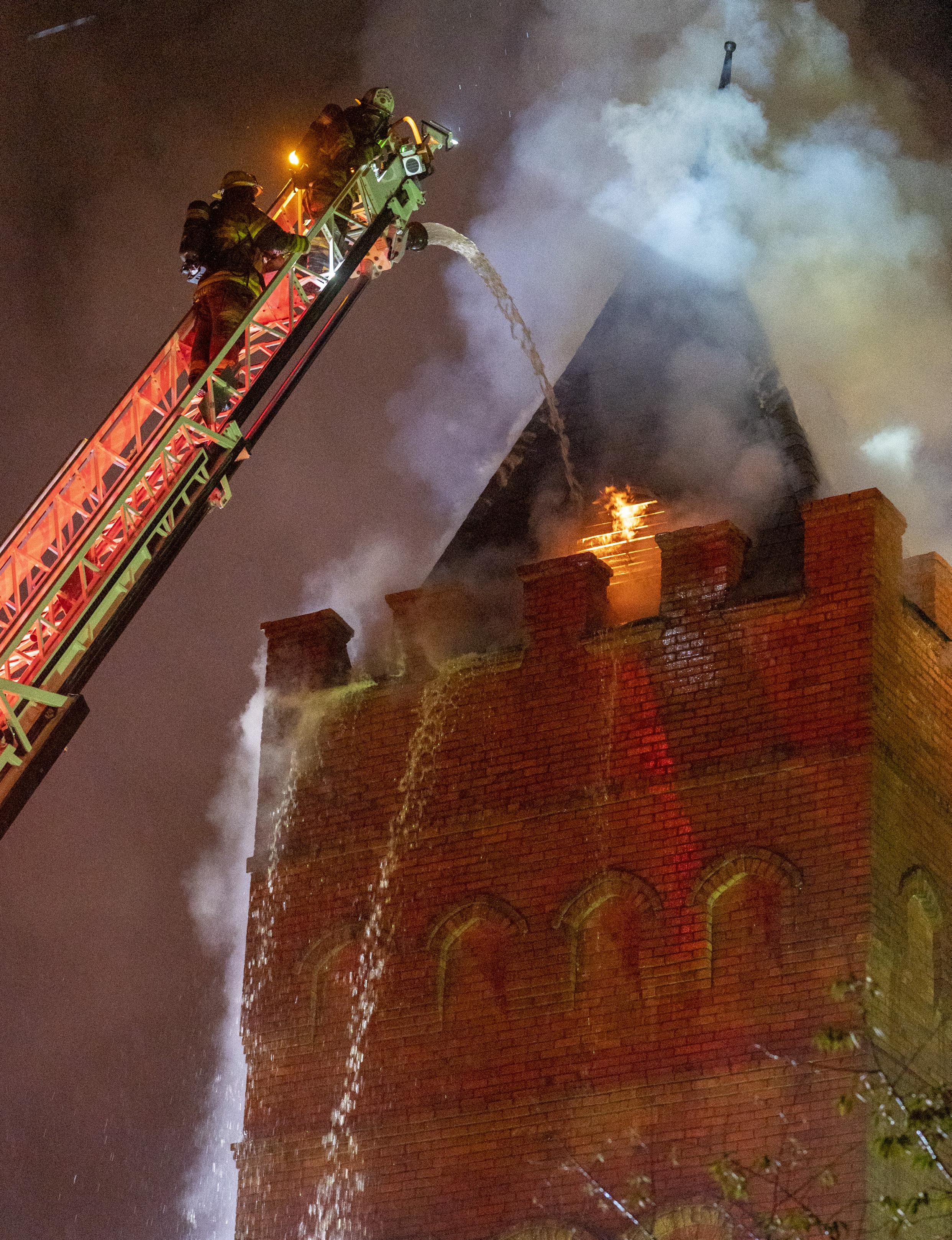

Abeloved historic landmark suffered serious know that it was the church that had been hit.” damage May 4 when Alexander City was “It was like being in a lightning storm,” Randy Kirkland rocked with high winds and lightning, but local said. “Normally, you see lightning and then hear the firefighters contained the bell tower fire at First thunder, but this was just the opposite. It was like an United Methodist Church, saving the sanctuary, church hall electrical storm, lightning striking and thunder crashing all and pre-school there. around, simultaneously.”
FUMC’s bell tower, built in 1906, apparently was struck Upton said the group thought lightning must have hit by lightning during a storm that swept quickly across the something in the neighborhood behind the church. She was state, dropping 7 inches of rain in some places and clocking dismayed to learn it was the bell tower that had been hit and 87-mile-per-hour winds. Just prior to the lightning strike, was on fire. several members of the congregation were meeting in The bell at FUMC rings to signify worship. It rings to the church but decided to go home before the weather remind passer-byers of God’s presence. It rings to announce worsened. beginnings and endings in the community. For 115 years,
“We were leaving the building because we realized the bell at FUMC has been a dynamic symbol of love and how bad the weather was life in Alexander City. Fire Crews Deployed getting, and we wanted The original bell tower was built in 1872 and suffered an Previous Page: The FUMC to make it home, but as ill fate in 1902 when a fire engulfed the whole of downtown, bell tower went up in flames after being struck by lightning; Left: Firemen dumped water through multiple access points to contain the fire; we were running to our vehicles, there was the loudest boom I’ve ever heard in my life,” Church member Lonna Upton said. decimating most of the shops, businesses and churches. And while it would be very interesting to say that out of the burnt kindling came the bell, still attached to the original wooden structure and reused in the current bell tower, no one seems to know for sure if that is factual. But Above: Multiple fire crews “I jumped and screamed. I Executive Pastor Michael Densmore said this month’s fire joined forces with ACFD had to make sure I hadn’t did not affect the bell. It is intact and sound, a much better to save FUMC. been hit. We didn’t yet fate than its possible counterpart from years before.
“After the fire in 1902, the Church leadership decided to move the church out from the downtown area a little bit, and they chose this location here at Green Street and Semmes Street,” Correll Pritchard, facilities manager at FUMC, said. “They began construction on this building in 1903.”
Three years later, the bell rang again, signaling Sunday services had begun. That was in May of 1906.
There have been many renovations, upgrades and additions through the years to the neoclassical Romanesque-style house of worship, but still, Church leadership always made a point of maintaining the dexterity and originality of the building that was born to new life following the 1902 fire. But now, because of the damage that the fire created in the steeple, the bell tower will also receive an interior upgrade.
“I was actually the first one of us on the scene because I had been out riding around looking for blown transformers,” Fire Chief Reese McAlister explained. “We all had, and when we got the call, I went back up to the church. I could smell the smoke. It didn’t smell like a transformer. It smelled like wood, and then I saw the smoke coming from the steeple.”
McAlister couldn’t get the keypad at the church entrance to work, as the power had shut down in that area of town during the storm, so he kicked in the front door of the sanctuary.
“The sanctuary was clear, but the louvers on the front of the bell tower are where I saw the fire,” he said. “So, I got in there, and things were falling from the top levels. A speaker fell and some other things. At that point, it became a complicated situation because I was worried about the safety of my guys.”
But once the ceiling finally fell and the firemen could see what they were working with, McAlister knew they were in business.
“There were so many safety issues,” he said. “We couldn’t get enough water pressure, so I called the water department, and they added about 20 PSI to the system to get us enough water to even begin to contend with the fire. That caused some pipes to burst and other issues that had to be fixed, but ultimately we were able to get our job done.”
McAlister said he was blessed to have 20 or 30 people on the scene right away that could help. Volunteer fire units from Hackneyville, Our Town, Willow Point and Kellyton all came with their tankers, while New Site covered station one for ACFD.
“I was grateful for all of them, but Kellyton saved us. They got there right when we needed water the most,” McAlister said. “I had 20,000 gallons of water by then, and we were ready to fight.”
Executive Pastor Michael Densmore commended the fire departments for their hard work, determination and perseverance throughout the evening.
“There was tremendous teamwork between Alexander City Fire Department and the neighboring units,” Densmore said. “Had it not been for the effectiveness of the fire departments, it could have been very, very bad.” He said the community also turned out in support, remembering and grieving the damage to the bell tower. Densmore reiterated that the bell is in place and sound, but there is work to do in the steeple. He said it looks like there was just a bit of water damage in the sanctuary but that the fire department did a phenomenal job damming up the doorway with rolled tarps and tables and then ushering the water towards the front entrance. “They really did their best to make sure as little water as possible went into the church,” Densmore said. Servpro has been retained to dry, remove and replace the flooring, which will take four to six weeks. While the sanctuary floors are being repaired, worship services will be held in the fellowship hall. “Fortunately, the fire department was able to contain the fire to the bell tower, which is just under 100 feet tall and about 24 feet wide,” Densmore said. “We are grateful that there was not more damage,” he said. “We will do our best to correct it. We just ask for prayers and patience as we build back.”
Saving FUMC
Left Page: Firemen needed to gain access at the safest point possible due to debris falling from the top levels; Right Page Clockwise: Crews worked tirelessly to smother the fire; Water pressure had to be increased to contain the flames; The emotion was tanglible; Beaten and bruised, the bell tower still stands; J.Spears cuts through the louvers to determine the safest point of access; Onlookers gather around to watch and pray for FUMC.
